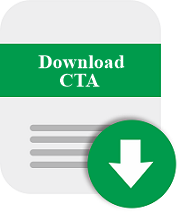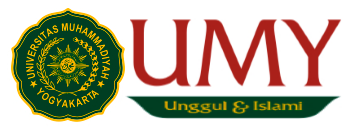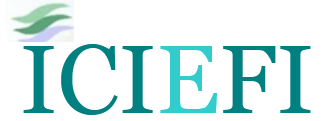Inflationary Dynamics of Consumer and Producer Financing: A case of Islamic and Conventional Banking in Pakistan
Abstract
One of the macroeconomics objectives is to stabilize purchasing power for the masses, which remains a leading economic problem in Pakistan for years. Economists are convinced about some degree of inflation in the economy to mobilize economic resources, with the condition to keep it to a minimum. Currently, Islamic finance is setting its firm footing in Pakistan and competing with the conventional financial system. Under this scenario, this study compares the Shari’ah compliant financing provided by Islamic financial institutes, and human made standards of conventional financial institutions. This study explores the effect of consumer financing and producer financing of Islamic and conventional banks on the inflation of Pakistan. Quarterly secondary data between 2009Q2 to 2019Q2 extracted from the State Bank of Pakistan reports and International Financial Statistic. ARCH model is used to estimate the model. Empirical results displayed that Islamic consumer financing, as expected in theory, helps to control inflation. The preaching of moderation in Islamic finance makes Islamic consumer financing less inflationary, and asset-based Islamic producer financing will perform better in reducing inflation. Islamic consumer financing is well participating in the management of inflation. However, Islamic producer financing lacks inflation curtailing ability. The small share in the financial market, and lack of long-term investment plans, are the few reasons why Islamic producer financing is not managing inflation.
Keywords
Full Text:
PDFReferences
Abbas, A. R. (1995). Islamic economics: A psycho-ethical paradigm, Al-Ta’sil, 2(1), 116-23.
Abubakar, Y. S. (2016). Corporate social responsibility of Islamic financial institutions: A look from the maqasid al-shariah (purpose of shariah) approach. Bus Eco Journal, 7(1), 255. doi: 10.4172/2151-6219.1000255
Amadeo, K. (2019). Types of inflation: The four most critical plus nine more. Retrieve on 12.3.2019, https://www.thebalance.com/types-of-inflation-4-different-types-plus-more-3306109.
Antzoulatos, A. (1996). Consumer credit and consumption forecasts. International Journal of Forecasting, 12(4), 439-453.
Arshed, N., Anwar, A., Hassan, M. S., & Bukhari, S. (2019). Education stock and its implication for income inequality: The case of Asian economies. Review of Development Economics, 23(2), 1050-1066.
Arshed, N., Anwar, A., Kousar, N., & Bukhari, S. (2018). Education enrollment level and income inequality: A case of SAARC economies. Social Indicators Research, 140(3), 1211-1224.
Ayuniyyah, Q., Beik, I. S., & Arsyianti, L. D. (2013). Dynamic analysis of Islamic bank and monetary instrument toward real output and inflation in Indonesia. Processing of Sharia Economics Conference – Hannover 9 Feburary.
Azariadas, C., & Smith, B. (1996). Private information, money and growth: Indeterminacies, fluctuations, and the mundell-tobin effect. Journal of Economic Growth, 1, 309–22.
Barro, R. J. (1995). Inflation and economic growth. NBER Working Paper No. 5326.
Beck, T., Demirguc-Kunt, A., & Levine, R. (2005). Bank supervision and corruption in lending. NBER Working Paper No. 11498.
Bencivenga, V. R. & Smith, B. D. (1991). Financial intermediation and endogenous growth. Review of Economic Studies, 58, 195-209.
Boyd, J. H., Levine, R. & Smith, B. D. (2000). The impact of inflation on financial sector performance. Journal of Monetary Economics, 47(2), 221-248
Boyreau-Debray, G. (2003) Financial intermediation and growth – Chinese style. Policy Research Working Paper 3027, The World Bank.
Cham, T., (2019). Does Islamic banking favors price stability? An empirical evidence from the GCC, Iran and Sudan. Journal of Economic Corporation & Development, 40(2), 123-167
Chapra, M. U. (1984). The economic problems of man and Islam. Islamic Order, 6, 17-31.
Chapra, M. U. (2008). Islamic economics: What it is and how it developed, EH. Net Encyclopedia, edited by Robert Whaples, March 16, 2008. Available at , Accessed on: 11.4.2008.
Cochran, J. P., & Steven, T. C. (2000). Free banking and credit creation implication for business cycle theory. The quarterly journal of Austrian economics, 3(3), 35–50
Corsetti, G., Pesenti, P., & Roubini, N. (1999). What caused the Asian currency and financial crisis?. Japan and the world economy, 11(3), 305-373.
Crowley J. (2008). Credit growth in the Middle East, North Africa and Central Asia Region. IMF Working Paper No: 08/184
Dar, A. H. & Akram, M. M. (2004). Islamic economics. Published by Ilmi kitab khana. Urdu bazar Lahore.
Debelle, G. (2004). Household debt and macroeconomy. BIS Quarterly Review, 51-64.
Demetriades O. P. & Hussein A. K. (1996). Does financial development cause economic growth? time series evidence from 16 countries. Journal of Development Economics 51(2), 387-411
Demetriades P., & Andrianova S. (2004). Finance and growth: What we know and what we need to know. University of Leicester.
Dhungana, N. T., & Pradhan, R. S. (2017). Effect of bank lending on inflation in Nepal. Journal of Advanced Academic Research, 4(2), 27-43.
Equitymaster. (2010). Equity or debt: Which is cheaper? Retrieve on 13/9/2018 https://www.equitymaster.com/detail.asp?date=10/13/2010&story=2&title=Equity-or-Debt-Which-is-cheaper.
Faizulayev, A. (2011). Comparative analysis between Islamic banking and conventional banking firms in terms of profitability, 2006-2009 (Doctoral dissertation, Eastern Mediterranean University (EMU)).
Fischer, S. (1993). The Role of Macroeconomic Factors in Growth. Journal of Monetary Economics, 32, 485–511.
Fry, M. J. (1988). Money, interest, and banking in economic development. American Journal of Agricultural Economics, 71(3), 824.
Ghirmay T. (2004). Financial development and economic growth in Sub-Saharan African countries: Evidence from time series analysis. African Development Bank.
Ghosh, A. & Phillips, S. (1998). Warning: Inflation may be harmful to your growth. IMF Working Papers 45
Goldsmith, R. W. (1969). Financial structure and development. Yale University Press, New Haves CT.
Grauwe, P. d., & Polan, M. (2005). Is inflation always and everywhere a monetary phenomenon?. The Scandinavian journal of economics 107(2), 239-259.
Greenwood, J. & B. Jovanovich, (1990). Financial development, growth and the distribution of income. J. Polit. Econ., 98, 1076-1107.
Haans, R. F. J., Pieters, C., & He, Z. (2016). Thinking about u: Theorizing and testing u- and inverted u-shaped relationships in strategy research. Strategic Management Journal, 37(1), 1177-1195
Hanif, N., Arshed, N., & Aziz, O. (2019). On interaction of the energy: Human capital Kuznets curve? A case for technology innovation. Environment, Development and Sustainability, 1-28.
Harwood, E. C. (1974). The three great swindles in the history of mankind. Economic education bulletin, XIV. 11, American Institute For Economic Research Great Barrington, Massachusetts 01230.
Hayes, A. F. (2017). Introduction to mediation, moderation, and conditional process analysis: A regression-based approach. Guilford publications.
Hewlett, S. A. (1977). Inflation and inequality. Journal of economics. 11(2)
Hoffman, P. R. (n.d.). Inflation steal almost 30 percent of buying power in turkey. Retrieve on 12/25/2018. http://www.hoffmanpr.com/press-release/inflation-steals-almost-30-percent-of-buying-power-in-turkey/.
Huang, Y. (1999). Inflation and investment controls in China: The political economy of central local relations during reform era. University of Michigan.
Iqbal, M., Kalim, R., & Arshed, N. (2019). Domestic and foreign incomes and trade balance-a case of south Asian economies. Asian Development Policy Review, 7(4), 355-368.
Kemmerer, E. W. (1918). Money and price discussion. The American Economic Review, Supplement, Papers and Proceedings of the Thirtieth Annual Meeting of the American Economic Association, 8(1). 259-270.
Khan, C. A., & Weiner, S. E. (1990). Has the cost of disinflation Declined?. http://www.kansascityfed.org/PUBLICAT/ECONREV/econrevarchive/1990/2q90kahn.pdf,
Khan, M. F. (1990). Factors of production and factor markets in Islamic framework. JKAU: Islamic Econ., 2, 25-46
Kia, A & Ali F. D. (2007). Modeling money demand under the profit-sharing banking scheme: Some evidence on policy invariance and long-run stability. Global Finance Journal, 18, 104-123.
Kia, A. (2006a). Deficits, debt financing, monetary policy and inflation in developing countries: Internal or external factors? evidence from Iran. Journal of Asian Economics, 17, 879-903.
Kia, A. (2006b). Economic policies and demand for money: Evidence from Canada, Applied Economics, 38, 1389-1407.
Kia, A. (2010). Money, deficits, debts and inflation in emerging countries: evidence from Turkey. The Global Review of Accounting and Finance, 1(1), 136-151.
Kia, A. (2013a). Determinants of the real exchange rate in a small open economy: Evidence from Canada. Journal of International Financial Markets, Institutions & Money, 23, 163– 178.
Kia, A. (2013b). Islam and the stock market. In Islam and the economy, M. Kabir Hassan and Mervyn K. Lewis (eds.), Oxford University Press, Forthcoming, Chapter 26.
Kia, A. (2014). Inflation: Islamic and conventional economic systems: Evidence from the United States. International Journal of Economic Perspectives, 2014, 8, 3, 19-40.
Kia, A. (n.d). Inflation: Islamic and conventional economic systems: Evidence from small and large countries. Working Paper 2-13 Finance and Economics Department Woodbury School of Business Utah Valley University 800 West University Parkway, Orem, UT 84058-5999 USA.
King, R.G., & Levine, R. (1993a). Finance and growth: Schumpeter might be right. Quarterly Journal of Economics, 108, 717-738.
Korkmaz, S. (2015). Impact of bank credits on economic growth and inflation. Journal of Applied Finance and Banking, 5(1), 51.
Levine, R. (1997). Financial development and economic growth: Views and agenda. Journal of Economic Literature, 35, 688–726.
Levine, R. (2002). Bank-based or market-based financial systems: Which is Better?. Journal of Financial Intermediation, 11, 398–428.
Lucas, R. (1988). On the mechanics of economic development. Journal of Monetary Economics. 22(1), 342.
Ludvigson, S. (1999). Consumption and credit: A model of time-varying liquidity constraints. The Review of Economics and Statistics, 81(3), 434-447.
Majaski, C. (2019). Debt financing vs equity financing: An overview. Retrieve on 13/5/2019. https://www.investopedia.com/ask/answers/05/debtcheaperthanequity.asp.
Mallik, G. & Chowdhury, A. (2001). Inflation and economic growth: Evidence from South Asian Countries. Asian Pacific Development Journal. 8, .1.
Mamo, F. T. (2012). Economic growth and inflation. Master’s Thesis, Södertörns University
Mankiw, N. G. (2016). Principles of macroeconomics. 8th Edition, Cengage Learning New York.
McKinnon, R. (1973). Money and capital in economic development. Washington: The Brookings Institute
Miller, M. (1998). Financial markets and economic growth. Journal of Applied Corporate Finance 11, 814.
Mises, L. V. (1920). Economic calculation in the socialist commonwealth. F.A. Hayek, ed., Collectivist Economic Planning, London: George Routledge & Sons.
Mises, L. V. (1920). The economic calculation in the socialist public. Archiv für Sozialwissenschaft und Sozialpolitik 47, 86-121.
Mises, L. V. (2006). Mises institute of Austrian economics, freedom and peace. The classical idea of sound money. Retrieve on 12/25/2018. https://mises.org/library/principle-sound-money
Mohieldin, M. (2012). Realizing the potential of Islamic finance (the world bank- economic premise) poverty reduction and economic management network (PREM).
Nyoni, T. (2018). Modeling and forecasting inflation in Kenya: Recent insights from ARIMA and GARCH analysis. Dimorian Review, 5(6), 16-40.
Oluitan, R.O. (2012). Bank credit and economic growth: Evidence from Nigeria. International Business and Management, 5(2), 102-110. Available from: http://www.cscanada. net/index.php/ibm/article/view/j.ibm.1923842820120502.1040 DOI: http://dx.doi.org/10.3968/j.ibm.1923842820120502.1040
Pagano, M. (1993). Financial markets and growth – An overview. European Economic Review, 37, 613–622.
Paul, S., Kearney, C. & Chowdhury, K. (1997). Inflation and economic growth: a multi-country empirical analysis. Applied Economics. 29, 1387-1301
Payne, J. E. (2008). Inflation and inflation uncertainty: Evidence from the Caribbean region. Journal of Economic Studies. 35(6), 501-511
Pelerin, M. (2012). Inflation is theft and fraud. Monty Pelerin’s World, Economics, Politics and investing. Available at http://www.economicnoise.com/2012/11/16/inflation-is-theft-and-fraud/.
Petkovski, M., & Kjosevski, J. (2014). Does banking sector development promote economic growth? an empirical analysis for selected countries in Central and South Eastern Europe. Economic Research-Ekonomska Istraživanja, 27 (1), 55-66.
Phelps, Edmund S. (1967). Phillips Curves, expectations of inflation and optimal unemployment over time. Wiley on behalf of The London School of Economics and Political Science and The Suntory and Toyota International Centres for Economics and Related Disciplines. Economica, New Series, Vol. 34, No. 135 (Aug., 1967), pp. 254-281.
Polleit, T. (2008). Mises's Apriorism Against Relativism in Economics. April 25; http://blog.mises.org/archives/008051.asp
Popov, A. (2017). Evidence on finance and economic growth. ECB Working Paper 2115.
Rioja, F. & Valev, N. (2003). Does One Size Fit All?: A Re-examination of the Finance and Growth Relationship. Social Science Research Network.
Rutayisire, M. J. (2015). Threshold effects in the relationship between inflation and economic growth: Evidence from Rwanda. African Economic Research consortium.
Samuelson, P. (1983). Economics, 11th Edition, New York, Mc-Graw Hill,
Sattar, Z. (1988). The Ethics of Profit in the Islamic Economic System: A Socioeconomic Analysis. The Islamic Quarterly: A Review of Islamic Culture, 32(2), 69-76.
Selim, M., & Hassan, M. K. (2019). Interest-free monetary policy and its impact on inflation and unemployment rates. ISRA Journal of Islamic Finance, 11(1), 46-61
Shahzad, A., Ahmed, T., & Rehman, K. U. (2012). Islamic financial system: A system to defeat inflation. Kuwait Chapter of the Arabian Journal of Business and Management Review, 2(4), 69-72
Shaikh, A. (2013). Crisis, austerity, and the role of economic theory in policy. social research, 80(3), 653-664.
Shaw, E. S. (1973). Financial Developing in Economic Development. Oxford University Press, New York
Shumpeter, J. A. (1934). The Theory of Economic Development Cambridge. Harvard University Press, Mass
Siddiqi, M. N. (1979). The Economic Enterprise in Islam, 2nd edition, Lahore, Pakistan: Islamic Publications.
Siddiqi, M. N. (1996). Role of Fiscal Policy in Controlling Inflation in Islamic Framework, King Abdul Aziz University, an unpublished manuscript. Available at , Accessed on: 11.4.2008
Siddiqui, M. N. (1979). The Economic Enterprise in Islamic, 2nd edition, Lahore, Pakistan: Islamic Publications
Sidrauski, M. (1967). Rational choice and patterns of growth in a monetary economy. American Economic Review, 57(2), 534-544.
Sprinkel, B. W. (1971). Money and Markets: A Monetarist View. Homewood, IL: Irwin.
Stringham, E. P. (2018). AIER American institute of economic research: inflation is theft: on the finding of AIER. Retrieve on 12/25/2018. https://www.aier.org/article/bourbon-exports-casualty-trade-war
Sulaiman, I., Arshed, N., & Hassan, M. S. (2016). Stock market development, can it help reduce inflation in SAARC countries? Journal of Accounting, Finance and Economics, 6(1), 101-110
Sulaiman, I., Arshed, N., & Mushtaq, A. (2016). Can stock market development put chains on inflation? A panel co-integration analysis on SAARC countries. Journal of Business and Economics, 7(4), 666-675
Švigir, M. & Miloš, J. (2017). Relationship between inflation and economic growth; comparative experience of Italy and Austria. FIP - Financije i pravo, 5(2).
Tang T. C. (2003), Directions of Bank lending and Malaysian Economic Development: An Empirical Study, International Journal of Management, 20(3), pp 342.
Usmani, M. T. (2004). An Introduction to Islamic Finance. Karachi: Maktaba Ma’ariful Quran.
Younus, S. (2004, June). The Impact of Monetary Policy on the Bank Portfolio in Bangladesh. Bank Parikrama.
Zoellick, R (2011). Food prices close to alert status. Le Figaro, with AFP.
DOI: https://doi.org/10.18196/ijief.v4i2.11372
Refbacks
- There are currently no refbacks.
Copyright (c) 2021 International Journal of Islamic Economics and Finance (IJIEF)

This work is licensed under a Creative Commons Attribution-ShareAlike 4.0 International License.
International Journal of Islamic Economics and Finance (IJIEF)
International Program for Islamic Economics and Finance
Department of Economics
Faculty of Economics and Business
Universitas Muhammadiyah Yogyakarta
Pascasarjana Building, Ground Floor
Jl. Brawijaya (Ringroad Selatan), Kasihan, Bantul
D.I. Yogyakarta 55183, INDONESIA
Official email: ijief@umy.ac.id













1.jpg)